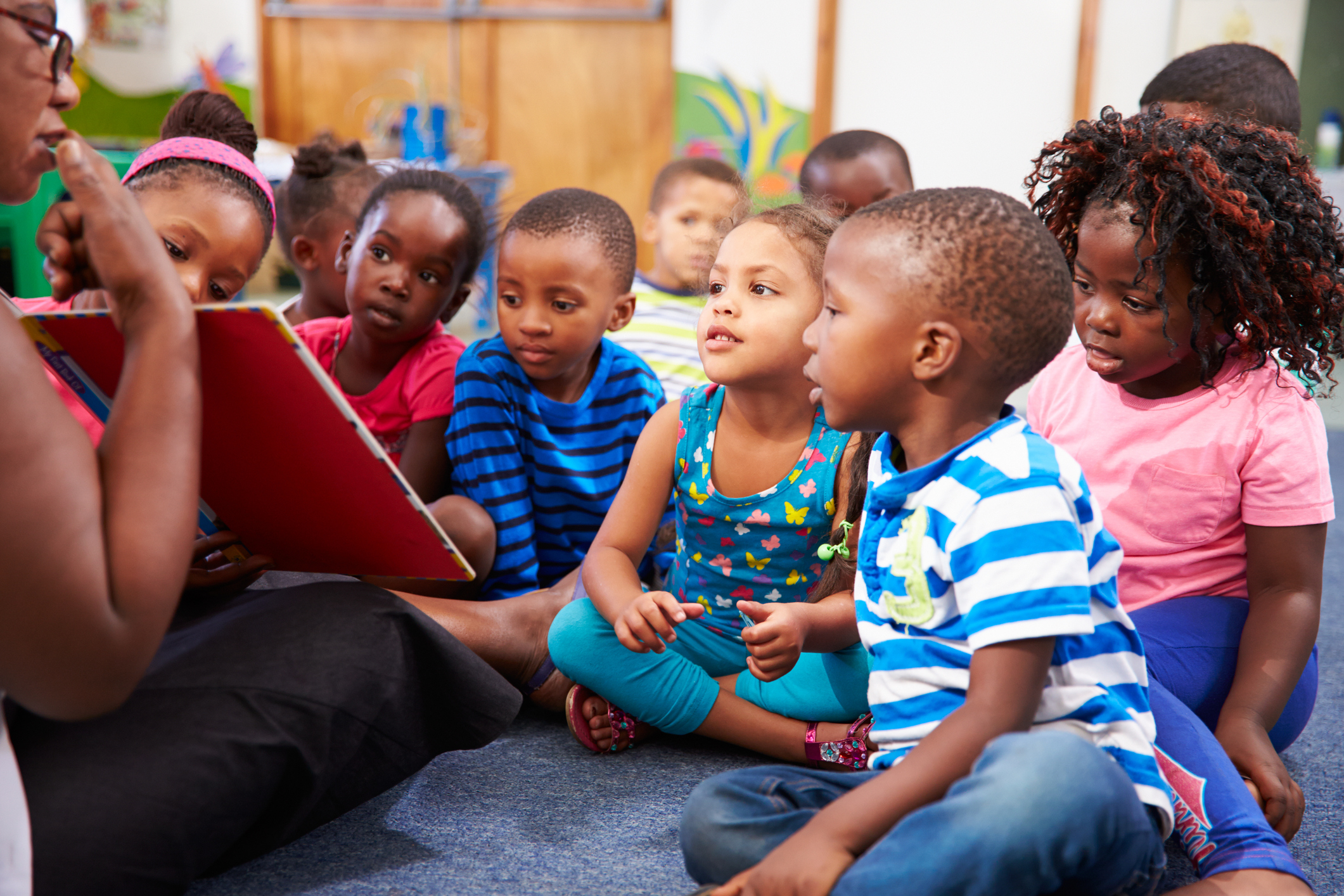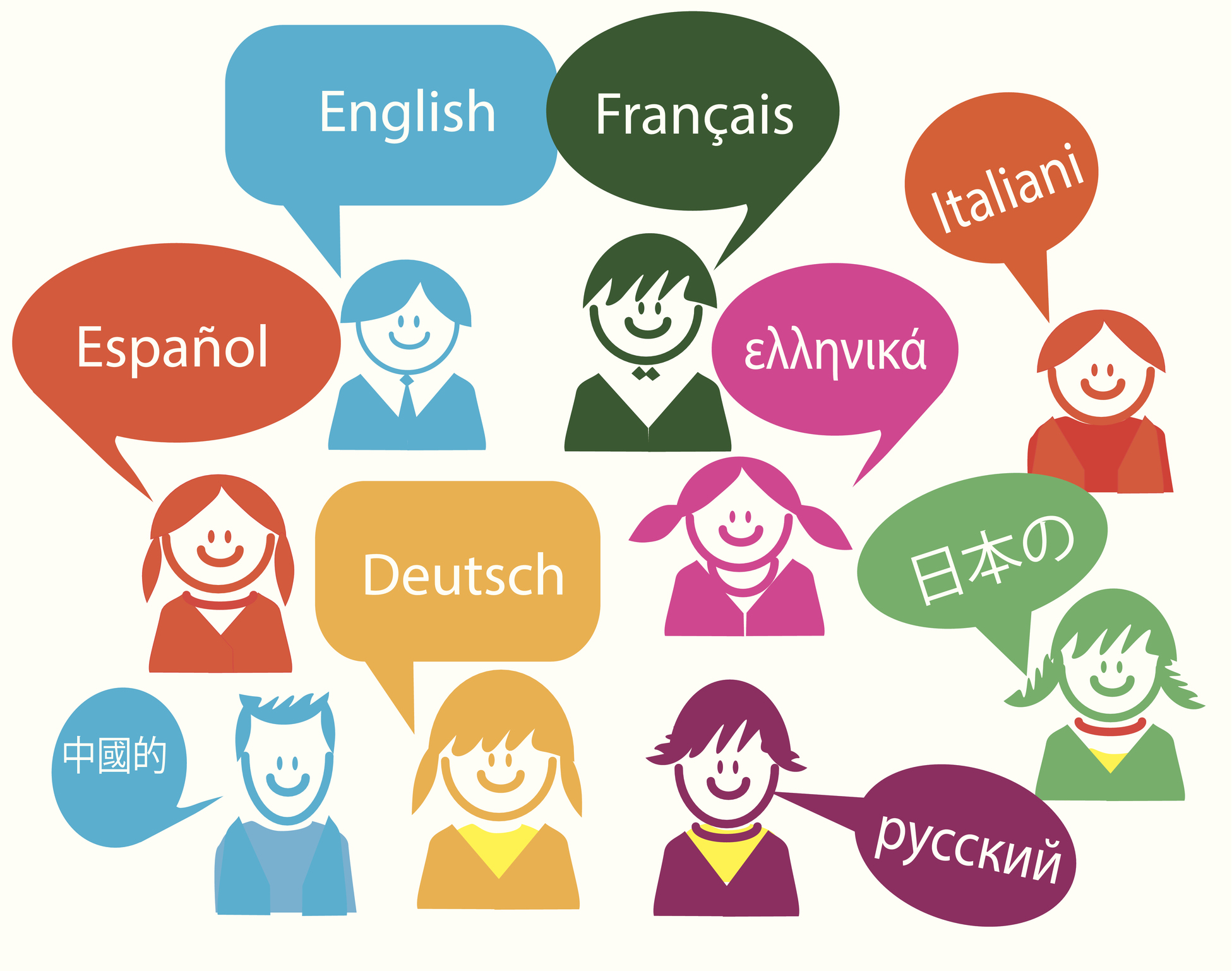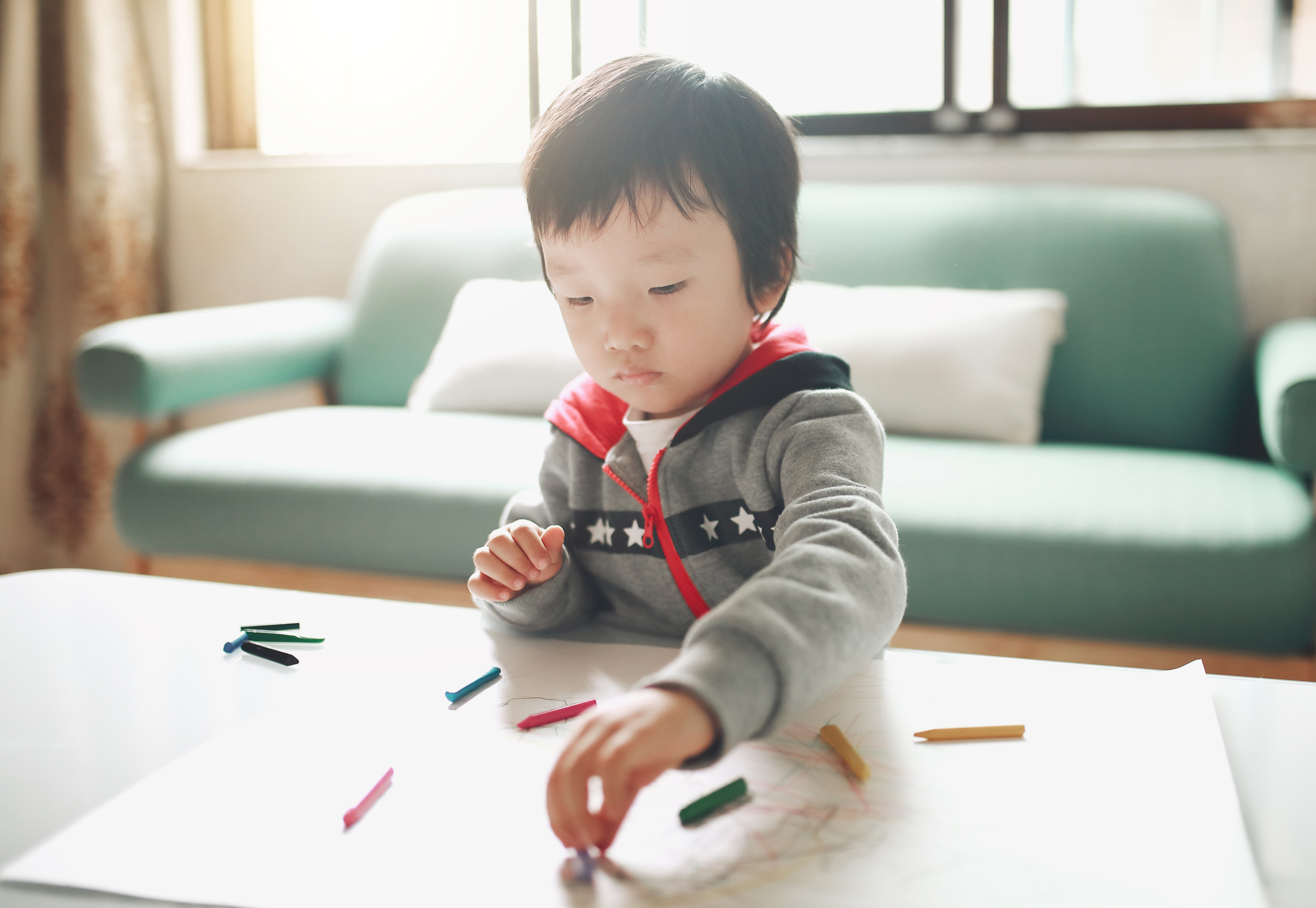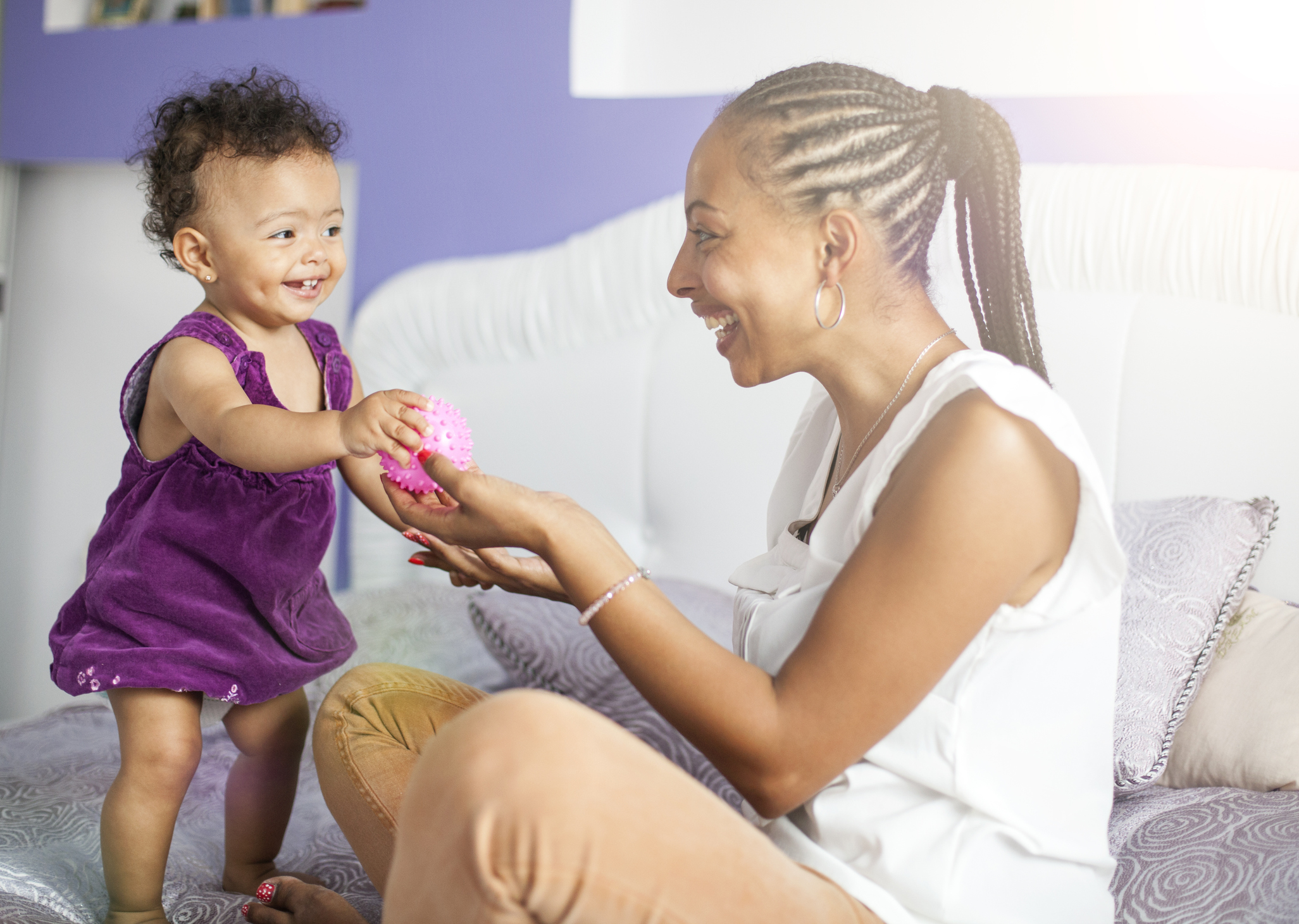Looking Back on 2015
The end of the year is always a good time for reflection – and we at the Council look back on 2015 as another banner year in our service to you – the early care...
As a parent of a young child learning two languages, I’m first to advocate for bilingualism. I also am aware of the challenges this long-term goal may bring upon my family and the early educators caring for my child.
One of the main challenges of dual language learners (DLLs) is learning and retaining the language development of the home language, which in the United States, is the one or more languages other than English spoken by the parents.
Having children learn English without losing the home language(s) is what dual language learners’ parents want to achieve. We know that no matter what, children will acquire English from school and their peers. In the long-run they will master English. There is also evidence that being a dual-language learner improves learning. Anya Kamenetz wrote in an NPR article, “Compared with students in English-only classrooms or in one-way immersion, dual-language students have somewhat higher test scores and also seem to be happier in school. Attendance is better, behavioral problems fewer, and parent involvement higher.”1
Early childhood education is an important stage of language development which makes the role of the early educator crucial. While parents do not expect educators to speak the family’s home language, the knowledge and expertise educators bring to the table when working with dual language learners can balance the child’s already arduous task of differentiating between two distinct languages, and learning to speak, read, and write in both.
Because the loss of the first language for young children can negatively impact children’s progress in school. It can also be detrimental for cultural reasons that are personal, familial or religious.
 The good news is that early childhood educators can help support children and their families by developing a strategy to incorporate a child’s home language while also helping them learn a new language.
The good news is that early childhood educators can help support children and their families by developing a strategy to incorporate a child’s home language while also helping them learn a new language.
“It is in all early educators’ best interest to be open-minded about dual language learners,” Vilma Williams, senior manager of Multilingual and Special Programs, Council for Professional Recognition said. “The topic of bilingual education, dual language learners, is new in early childhood education. Sometimes teachers who are not working in bilingual programs or who are bilingual themselves, overlook this subject or believe that this could apply only to bilingual teachers, when in fact, it applies to all teachers.”
Currently, early educator preparation for working with dual language learners is a topic undergoing research by the Partnership for Early Education Research (PEER):
PEER members have noted that their organizations struggle to find actionable information about how to address the needs of their DLL children. Practitioners find it difficult to wade through the growing body of research on the effectiveness of instructional strategies for serving DLLs to identify “best practices.” In addition, researchers and practitioners agree that new programs and strategies cannot be implemented effectively without considering the teacher, student, and family characteristics of specific settings.2
 The Council supports the work of Candidates in all communities, in multiple languages, and those working in special programs and under special conditions, migrant, Alaska Natives and American Indian, Home Visitor, educators with disabilities, international programs, and military programs in the U.S. and overseas. The CDA is offered in all languages in order to encourage multilingual early education in all child care settings. In addition, the CDA prepares all candidates to work with dual language learners and apply best practices for the classroom and with families representing all cultures.
The Council supports the work of Candidates in all communities, in multiple languages, and those working in special programs and under special conditions, migrant, Alaska Natives and American Indian, Home Visitor, educators with disabilities, international programs, and military programs in the U.S. and overseas. The CDA is offered in all languages in order to encourage multilingual early education in all child care settings. In addition, the CDA prepares all candidates to work with dual language learners and apply best practices for the classroom and with families representing all cultures.
An example of the Council’s multilingual efforts is in the Lakota Nation, located in both North and South Dakota, where CDA candidates obtain their credentials in their native language and bilingual Lakota English specializations.
CDA candidates on the Lakota Nation reservation assemble their resource files in both English and the Lakota language. During their training, they often set up their classrooms by labeling all items in the Lakota language, making it visible on walls, chairs, tables, etc. to illustrate the dual language learning importance.
It’s important for young children and their families to feel engaged by early educator practices.
“Several of the researchers I talked with also pointed out that, in bilingual education, non-English-dominant students and their families tend to feel that their home language is heard and valued, compared with a classroom where the home language is left at the door in favor of English.”1
 Young learners acquiring two languages can benefit from the educators’ understanding when it comes to the frustrations that may come with acquiring two or more languages. For instance, at times, some children might go through phases and speak less. But in my experience as a parent and former family child care assistant, this is normal and it’s ok to encourage the child through other language activities to make him or her feel more at ease without the pressure of speaking perfectly in English.
Young learners acquiring two languages can benefit from the educators’ understanding when it comes to the frustrations that may come with acquiring two or more languages. For instance, at times, some children might go through phases and speak less. But in my experience as a parent and former family child care assistant, this is normal and it’s ok to encourage the child through other language activities to make him or her feel more at ease without the pressure of speaking perfectly in English.
In my experience, I’ve found these tactics helpful:
 Provide numerous appropriate experiences to help children gain an understanding of new language – specifically, to hear the sounds of new language especially new words that connect them to people, objects and experiences in their lives.
Provide numerous appropriate experiences to help children gain an understanding of new language – specifically, to hear the sounds of new language especially new words that connect them to people, objects and experiences in their lives.Families and children will benefit from your efforts to incorporate dual language teaching strategies that help guide these young learners as they acquire two or more languages. By applying best practices and showing your professionalism with these young learners and their families, you are also showing your sensitivity to all cultures through a positive experience.
This rewarding experience will help children grow developmentally with their new language skills and you’ll be able to witness their confidence increase as they continue learning and eventually become bilingual.
Source:The end of the year is always a good time for reflection – and we at the Council look back on 2015 as another banner year in our service to you – the early care...
As the population of young children keeps getting more diverse in this country, many schools and programs are seeking teachers and assistants that speak the languages needed in their classrooms. However, it is not enough...
Across the globe, in places like Uganda and Dublin, mothers are being made aware that the 1,000 day period from the beginning of pregnancy to a child’s second birthday will, as midwife Susan Ejang says....
We know how important it is for you to renew your CDA Credential. That’s why the Council for Professional Recognition has been working hard to make the online application process easier for you. It has...
By Dr. Robert Gundling, Deputy Operating Officer, Sunshine Early Learning Center Imagine a world where the voice of early care and education leaders, advocates, administrators and teachers, mainly in community-based programs is represented in articles...
Early childhood education is finally getting its time in the spotlight. It’s great to see more and more funding going into programs that will make a difference for thousands of young children and their families....
Early childhood education (ECE) is in the spotlight as never before. Being in the limelight, however, has highlighted the field’s fragmentation and the variability in the quality of children’s formal early learning experiences. This reality...
How would you like to find out about the life of an exceptional educator and the leader of the Council for Professional Recognition? This post recognizes our CEO, Dr. Valora Washington, who has been in...
Welcome to the Council and thank you for checking out our new blog. It is with great excitement that the Council takes the first step in the world of blogging to communicate with all of...
Vice President of People and Culture
Janie Payne is the Vice President of People and Culture for the Council for Professional Recognition. Janie is responsible for envisioning, developing, and executing initiatives that strategically manage talent and culture to align people strategies with the overarching business vision of the Council. Janie is responsible for driving organizational excellence through strategic talent practices, orchestrating workforce planning, talent acquisition, performance management as well as a myriad of other Human Resources Programs. She is accountable for driving effectiveness by shaping organizational structure for optimal efficiency. Janie oversees strategies that foster a healthy culture to include embedding diversity, equity, and inclusion into all aspects of the organization.
In Janie’s prior role, she was the Vice President of Administration at Equal Justice Works, where she was responsible for leading human resources, financial operations, facilities management, and information technology. She was also accountable for developing and implementing Equal Justice Works Diversity, Equity, and Inclusion strategy focused on attracting diverse, mission-oriented talent and creating an inclusive and equitable workplace environment. With more than fifteen years of private, federal, and not-for-profit experience, Janie is known for her intuitive skill in administration management, human resources management, designing and leading complex system change, diversity and inclusion, and social justice reform efforts.
Before joining Equal Justice Works, Janie was the Vice President of Human Resources and Chief Diversity Officer for Global Communities, where she was responsible for the design, implementation, and management of integrated HR and diversity strategies. Her work impacted employees in over twenty-two countries. She was responsible for the effective management of different cultural, legal, regulatory, and economic systems for both domestic and international employees. Prior to Global Communities, Janie enjoyed a ten-year career with the federal government. As a member of the Senior Executive Service, she held key strategic human resources positions with multiple cabinet-level agencies and served as an advisor and senior coach to leaders across the federal sector. In these roles, she received recognition from management, industry publications, peers, and staff for driving the creation and execution of programs that created an engaged and productive workforce.
Janie began her career with Verizon Communications (formerly Bell Atlantic), where she held numerous roles of increasing responsibility, where she directed a diversity program that resulted in significant improvement in diversity profile measures. Janie was also a faculty member for the company’s Black Managers Workshop, a training program designed to provide managers of color with the skills needed to overcome barriers to their success that were encountered because of race. She initiated a company-wide effort to establish team-based systems and structures to impact corporate bottom line results which was recognized by the Department of Labor. Janie was one of the first African American women to be featured on the cover of Human Resources Executive magazine.
Janie received her M.A. in Organization Development from American University. She holds numerous professional development certificates in Human Capital Management and Change Management, including a Diversity and Inclusion in Human Resources certificate from Cornell University. She completed the year-long Maryland Equity and Inclusion Leadership Program sponsored by The Schaefer Center for Public Policy and The Maryland Commission on Civil Rights. She is a trained mediator and Certified Professional Coach. She is a graduate of Leadership America, former board chair of the NTL Institute and currently co-steward of the organization’s social justice community of practice, and a member of The Society for Human Resource Management. Additionally, Janie is the Board Chairperson for the Special Education Citizens Advisory Council for Prince Georges County where she is active in developing partnerships that facilitate discussion between parents, families, educators, community leaders, and the PG County school administration to enhance services for students with disabilities which is her passion. She and her husband Randolph reside in Fort Washington Maryland.
Chief Operations Officer
Andrew Davis serves as Chief Operating Officer at the Council. In this role, Andrew oversees the Programs Division, which includes the following operational functions: credentialing, growth and business development, marketing and communications, public policy and advocacy, research, innovation, and customer relations.
Andrew has over 20 years of experience in the early care and education field. Most recently, Andrew served as Senior Vice President of Partnership and Engagement with Acelero Learning and Shine Early Learning, where he led the expansion of state and community-based partnerships to produce more equitable systems of service delivery, improved programmatic quality, and greater outcomes for communities, children and families. Prior to that, he served as Director of Early Learning at Follett School Solutions.
Andrew earned his MBA from the University of Baltimore and Towson University and his bachelor’s degree from the University of Maryland – University College.
Chief Financial Officer
Jan Bigelow serves as Chief Financial Officer at the Council and has been with the organization since February of 2022.
Jan has more than 30 years in accounting and finance experience, including public accounting, for-profit and not-for-profit organizations. She has held management-level positions with BDO Seidman, Kiplinger Washington Editors, Pew Center for Global Climate Change, Communities In Schools, B’nai B’rith Youth Organization and American Humane. Since 2003, Jan has worked exclusively in the non-profit sector where she has been a passionate advocate in improving business operations in order to further the mission of her employers.
Jan holds a CPA from the State of Virginia and a Bachelor of Arts degree from Lycoming College. She resides in Alexandria VA with her husband and dog.
Read our monthly e-newsletter and keep up to date on all Council programs and services, as well as the latest news in the world of early care and education. Subscribe today to stay connected with us. You’ll receive timely information on events, webinars, special promotions, and more.